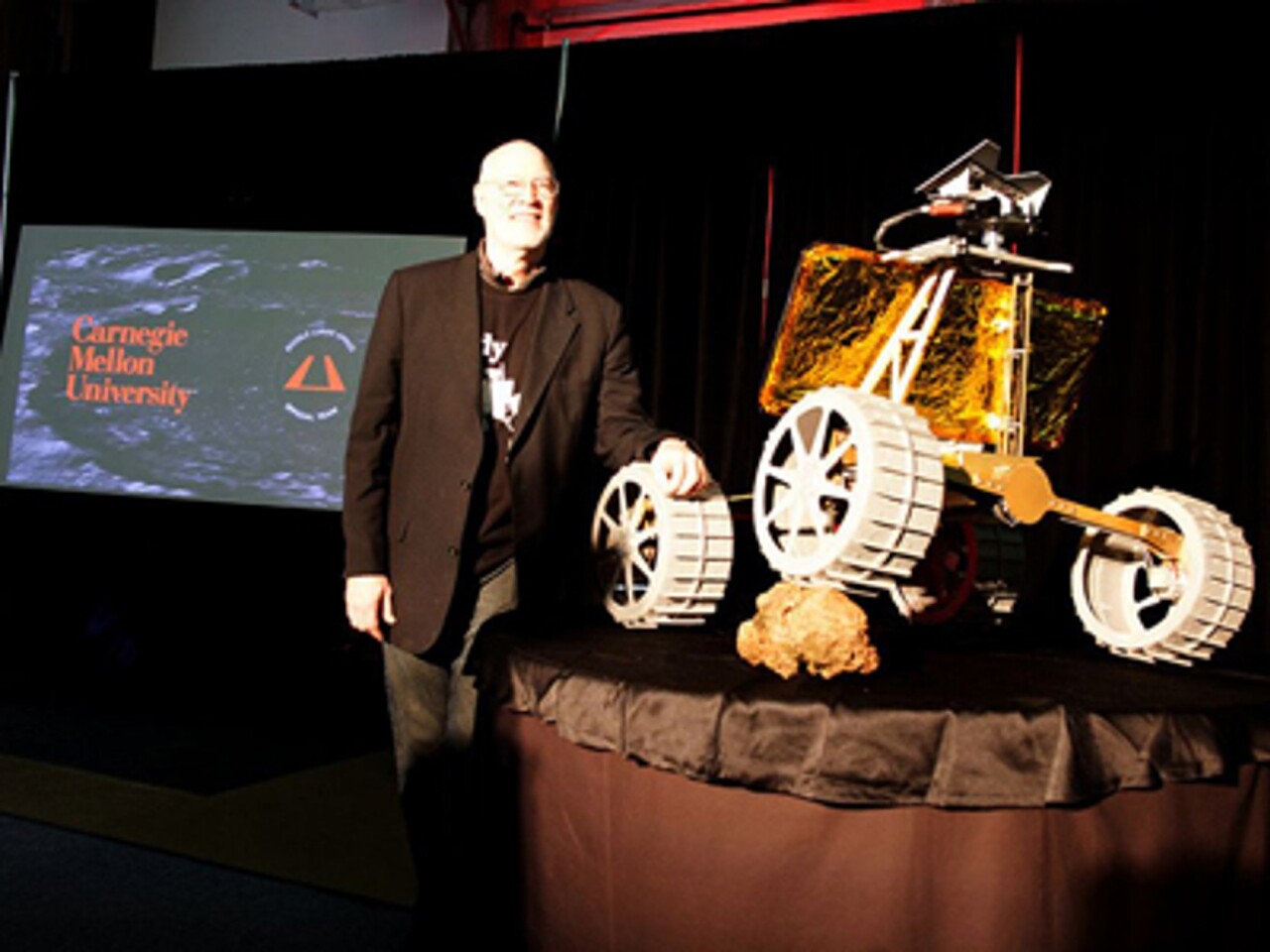Carnegie Mellon University (CMU) has unveiled Andy, a four-wheeled unmanned rover designed to explore the rough terrain and recently discovered pits of the Moon. Developed in cooperation with Pittsburgh's Astrobotic Technology, the solar powered robot is CMU's entry for the US$20 million-plus Google Lunar XPrize, and may one day help pave the way toward permanent outposts on the Moon.
Named after Andrew Carnegie and Andrew Mellon, Andy was built to withstand the freezing cold and boiling hot temperatures of the lunar surface in the Lacus Mortis, or "Lake of Death" region. The product of nine months labor by a workforce made up mostly of 50 CMU students, it's powered by 100 W solar panels and a 20 V lithium-ion battery.
Despite its light weight of 33 kg (72.7 lb), Andy has been designed to handle rough terrain. Standing 102 cm (40 in) high, its four 30 cm wheels provide 18 cm of ground clearance, as well as a wide stance and a low center-of-gravity. Meanwhile, its brushless in-wheel electric motors allow the rover to negotiate slopes and rocks at speeds of up to 18 cm/sec (7 in/sec). In addition, CMU says that Andy has the "softest footprint and greatest strength-to-weight ratio of any space rover to date."

Andy is designed for reliability using terrestrial parts and high degree of redundancy is built in, with fault detection and correcting software to swap between components. Its interface uses landing imagery and a 3D path reconstruction for navigation and recording. It also has panoramic near real-time cameras, and its autonomous driving systems was originally designed by CMU for NASA's Mars rovers.
Though it's primary goal is to win the Lunar XPrize, which was established to promote private exploration of the Moon, CMU emphasizes that Andy's mission goes well beyond that. One particular objective will be to seek out polar ice deposits in permanently shadowed craters, which could be used to produce air and rocket fuel for future explorers, as well as looking at the recently discovered Moon pits that may lead to caverns that could be the key to building manned outposts on the Moon.
CMU says that in its next phase of development, Andy will receive better hardening against radiation by installing space-certified parts. The rover will also carry a payload of artwork coordinated by Lowry Burgess, CMU professor of art, and Mark Baskinger, associate professor of design
"Every extraterrestrial robot carries some DNA from Carnegie Mellon, but Andy would be the first true CMU robot to make the leap from Earth," says William "Red" Whittaker, professor of robotics and director of the Field Robotics Center. "This is the culmination of lots of work by lots of people and is the next step toward Carnegie Mellon becoming a spacefaring university."
Source: CMU






